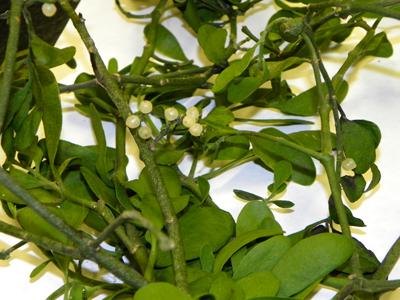
Fresh sample of Phoradendron leucarpum on a Citrus tree from Florida. White berries are eaten and disseminated by birds.
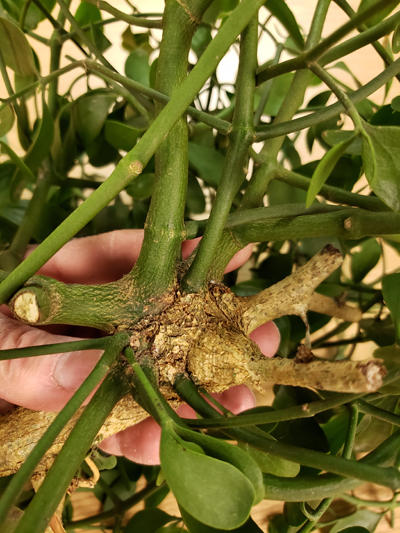
The attachment site of the leafy mistletoe to the tree.
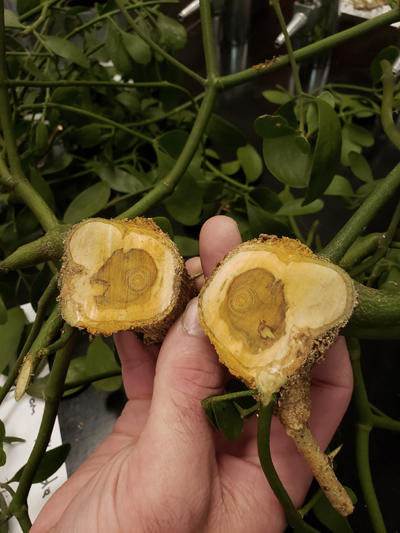
A cross section through the infection site where the dwarf mistletoe is infecting the branch. Light areas are the mistletoe, dark area is the wood.
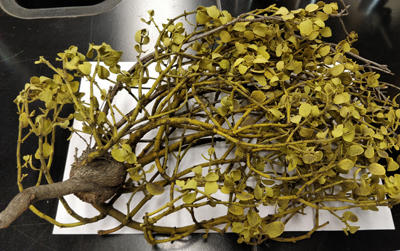
Phorodendron villosum on oak from Arizona.
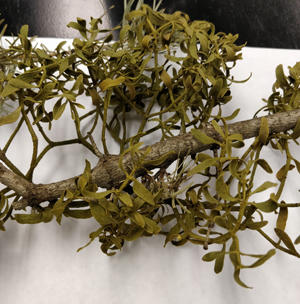
Phoradendron bolleanum on white fir. Most leafy mistletoe are on hardwood trees but some like this one and those below are on conifers.
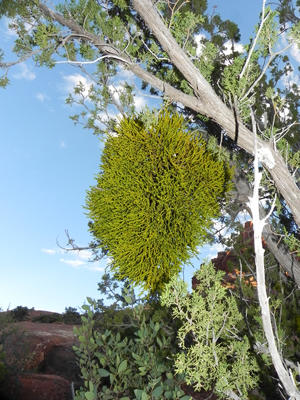
Phoradendron juniperinum is a leafy mistletoe without leaves. It occurs in Arizona and other desert regions of the southwest. This mistletoe has adapted to desert environments and has green stems but no leaves.
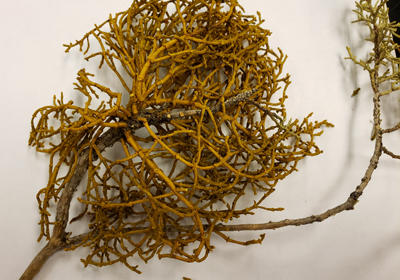
Phoradendron juniperinum from a juniper growing in New Mexico. You can see the long stems (they turn yellow when dry) of the mistletoe and no conspicuous leaves.
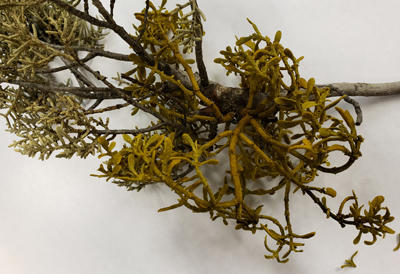
Phoradendron densum on Arizona cypress. This mistletoe does have leaves but they are smaller than the leaves of Phoradendron on hardwoods.